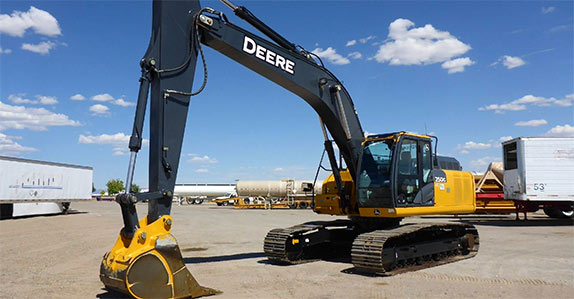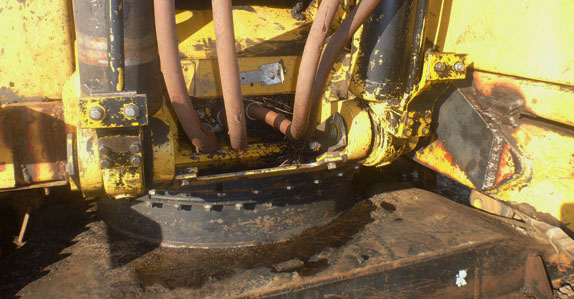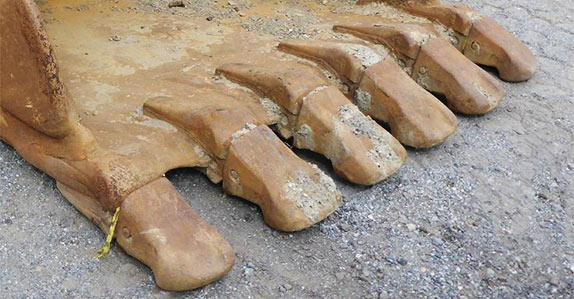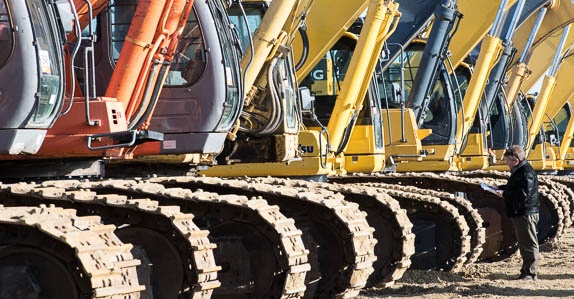If you're looking for a used hydraulic excavator, check out the selection available for sale online at IronPlanet.com and at Ritchie Bros. unreserved onsite auctions. But before you head out to inspect the machine you want, check for these five things to help determine the value of an item you're interested in buying and avoid unexpected repairs or replacement costs.
1. Play or movement.
A damaged slew ring can be one of the most costly items to repair or replace in a used hydraulic excavator, so make sure to rotate the hydraulic excavator housing to a quarter turn and check for any play or movement in the slew ring. The slew ring bearing has a play limit, so it’s good to measure it and check against specs.

Look for play or movement at the connection points of the boom, stick and bucket as well. Ideally all pins and bushings should be tight. Any loose connections, particularly at the connection points between the excavator stick and bucket, could mean a loss in excavation accuracy and a need for repairs.
2. Cracks, bends and dents.
Cracks are never a good sign, especially when they exist in key connection point welds, such as between the boom and stick or stick and bucket. The existence of cracks or significant bends could mean the excavator's overall structural integrity has been negatively affected and the boom or stick will need to be replaced. The existence of large dents on the hydraulic excavator's undercarriage or to the top of the excavator's stick could mean the machine was used without proper care by its operator.

3. Leaks.
Open the hydraulic pump compartment and look for signs of leaks. Check all hoses, lines and cylinders. Also check for leaks in the slew ring or swing bearing and swivel joint, which could forewarn of excessive play or movement. Any leaks will need to be repaired to ensure the safe and continued operation of the hydraulic excavator.
4. Inaccurate/broken hours meter.
If the hours meter is not operating or the reading is in question, check the control pedals for wear. Excessive wear could indicate the hydraulic excavator has more operating hours logged than noted.

5. Scalloping.
Check between the excavator bucket teeth for signs of scalloping, half-mooned shapes. Scalloping does not necessarily indicate that a bucket needs to be replaced, but it does indicate a reduced cutting force.
The tips above serve as a good starting point to help you research a potential used excavator. Above all, check the maintenance records if they’re available, and have a qualified mechanic or expert inspect the machine if you have any doubts.
Find the hydraulic excavator you need: search all excavators being sold on IronPlanet, as well as machines available at Ritchie Bros. unreserved auctions.




